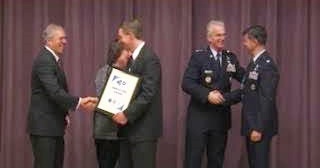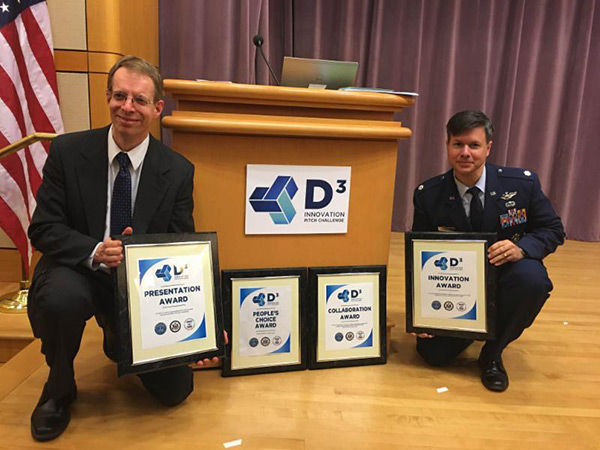 The National Space Society congratulates the Space Solar Power D3 (SSPD3) team on sweeping the awards in a March 2 multi-departmental competition to find promising new technology ideas that could simultaneously advance diplomacy, defense and development (D3). The SSPD3 team proposal was titled “Carbon-Free Energy for Global Resilience and International Goodwill.”
The National Space Society congratulates the Space Solar Power D3 (SSPD3) team on sweeping the awards in a March 2 multi-departmental competition to find promising new technology ideas that could simultaneously advance diplomacy, defense and development (D3). The SSPD3 team proposal was titled “Carbon-Free Energy for Global Resilience and International Goodwill.”
“Our multi-agency industry team proposal was in the top 1% of ideas picked to present to the very senior panel including the Vice Chairman of the Joint Chiefs of Staff in the D3 Innovation Challenge, a first-of-a-kind contest for ideas sourced from across the Department of Defense, Department of State, and United States Agency for International Development by the Secretary of Defense and Secretary of State themselves,” said team member Peter Garretson. “Our idea to start a national Space Solar Power Program won hands down, taking four of seven possible awards,” he said.

Space Solar Power (SSP) is an energy concept where an orbiting satellite gathers energy from sunlight in space and transmits it wirelessly to Earth. SSP can solve our energy and greenhouse gas emissions problems and provide large quantities of energy to each and every person on Earth with very little environmental impact. This was the first time that SSP was briefed at such a high level.
The space solar power D3 team includes members of the Air Force’s Air University, the Naval Research Lab, Northrop Grumman, NASA, the Joint Staff Logistics and Energy Division, the Defense Advanced Research Projects Administration, the Army, and the Space Development Steering Committee.
“Space Solar Power has made a giant leap forward thanks to Paul Jaffe, Peter Garretson, and the rest of the team,” said Dale Skran, NSS Executive Vice President and Chairman of the NSS Policy Committee, adding, “We at NSS look forward to continuing to promote SSP at the national and international levels.” Space Solar Power is one of the milestones that NSS envisions on the road to a prosperous future where the resources of space come to benefit us on Earth. The NSS Roadmap to Space Settlement (www.nss.org/roadmap ) documents this and other milestones.
Further Resources:
- NSS has created the world’s largest online library about SSP at nss.org/ssp.
- Watch and please share the SSPD3 team seven-minute video presentation here:
https://youtu.be/M9dQsRv1XDg - Find out more about the proposal at the website: d3ssp.org
- Use: #D3SSP
- See the SSPD3 Facebook page.
- Peter Garretson also has a two-hour interview on The Space Show from Sunday March 6.


















